The following is an actual photo and original copy
of a recent online auction.
Civil War Era FIFE or FLUTE - Rosewood & Brass
Here's another Civil War period flute. I believe it's rosewood. Evidently
saw
lots of use and the patina is great. No maker's name that I can see but most
weren't marked. Guaranteed authentic. This auction is for the one item only, the
others will be listed seperately.
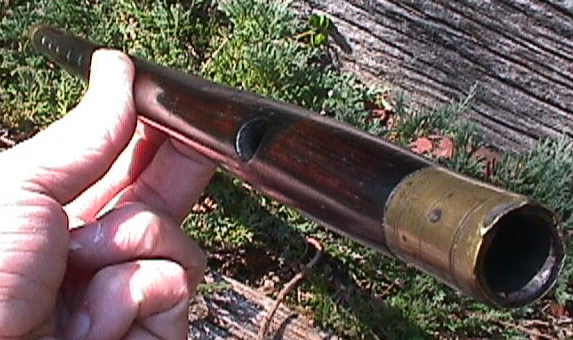
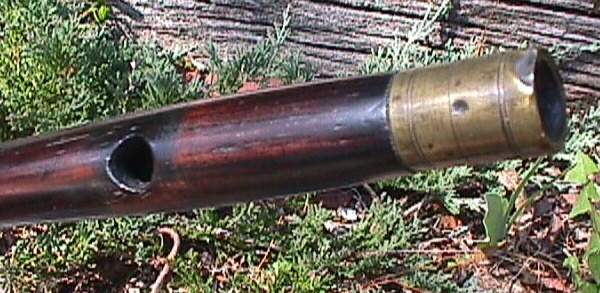
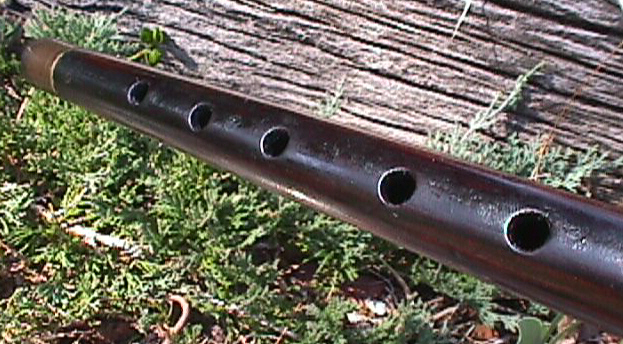
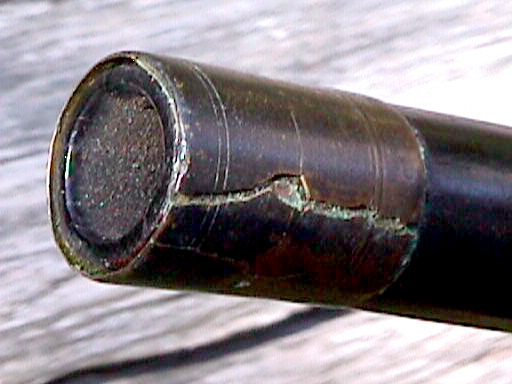
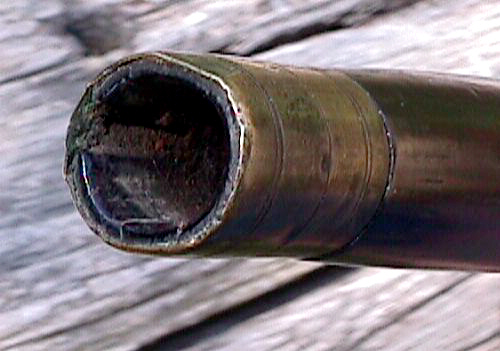
~CRITIQUE~
This is a nice example of an instrument that may well be from the Civil War
Era and the seller makes no claim of military use, though one might infer that
from the title. The term 'Civil War Era' speaks only of the age, not specific
use of the instrument. Without a maker's mark it can't be dated with much
precision and the seller's comment that 'most weren't marked' is not entirely
without merit.
There is plenty of evidence indicating that all sorts of craftmen from the
period produced fifes as post-war popularity grew. We would expect a military
instrument to be produced by a manufacturer of musical instruments (these were
produced under contract). These instruments would almost certainly have been
marked by the maker. These were
people who took great pride in their work. However, after 140 years, it is
conceivable that the mark has been obliterated, or at least very difficult to
see.
So let's look at each photo. (thumbnails supplied for reference)
 | In the first photo,
although the angle is a bit odd, we can see that the fife is enlarged around the
embouchure. This swelling is typical of the period and is evident on
authenticated
instruments such as Firth & Pond. |
 | This image
clearly shows the loss of material in the softer parts of the wood's grain.
Although this can be acomplished purposely, the finish over the area seems
undisturbed and would
indicate a slow shrinking of the open cell areas of the grain. This is common on
wooden items that have suffered many expansion/contraction cycles due to
temperature and humidity changes. The dimple in the brass ferrule is there to
hold it in place and reflects a system still in use today (though current models seem to
use a smaller, sharper implement). |
 | This picture clearly
shows 5 of the 6 finger holes. There is a distinctly larger space between the
3rd and 4th holes which makes the holes appear as two sets of three as opposed
to six evenly spaced holes. This is most common on later instruments and unseen
(so far) on American made fifes prior to the 1840s. |
 | The ferrule at the foot
of the fife appears to have been weakened by oxidation and cracked as the wood
swelled. This type of damage is common on instruments of age that haven't
been stored properly and the scored lines decorating the ferrule are consistent
with the period. |
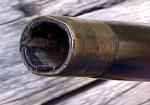 | The head ferrule,
though intact, exhibits evidence of physical abuse. The ferrule is dented and
bent and the wood is cracked and broken. Again, this type of damage usually
indicates long periods of use (and abuse) and is expected with an instrument aged 140
years or so. |













